Which Big Four accounting firm failed its annual inspection (again)? Maybe we’ll find out in 2026

The Canadian Public Accountability Board has released its annual inspection results. One Canadian firm continues to show no public audit improvement
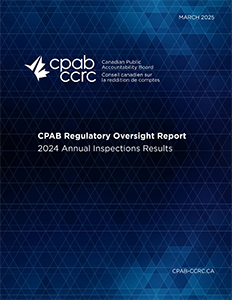 |
Download the 2024 Annual Inspections Results from the Canadian Public Accountability Board. |
TORONTO, April 7, 2025 – Time is running out for one Canadian accounting firm to improve its audit quality before its name is revealed to investors and the public. The Canadian Public Accountability Board has released its annual inspection report and one member of the Big Four accounting firms has “unacceptable levels … over consecutive years” of audit deficiencies. In 2026, as a result of legislative changes to its governing rules, CPAB will “name names” for the first time in its history, since its founding in 2003.
The Big Four accounting firms in Canada comprise the Canadian network members of global brands Deloitte, Ernst and Young, KPMG, and PricewaterhouseCoopers. According to CPAB, one of these four firms has far worse audit inspection results than its peers, a metric based on “significant findings,” which is defined as a “deficiency in the application of auditing or other relevant professional standards” requiring additional audit work.
One firm alone had seven audit engagement files with significant findings out of just eight in total for the entire Big Four. Thirty per cent of its files had significant findings in 2024, compared to 12 per cent overall for the Big Four. The same firm has shown little improvement as it had a 29 per cent rate in 2023.
The Canadian audit watchdog has imposed enforcement actions against the firm, including enhanced reporting to CPAB, the appointment of an independent monitor, enhanced internal monitoring and oversight of quality of initiatives, and the implementation of a quality action plan.
As reported by Canadian Accountant, after years of industry consultation, government relations and media coverage, CPAB will publish individual, “firm-specific” public inspection reports, commencing with 2025 inspections, with publication beginning in the first quarter of 2026. As the Globe and Mail recently wrote succinctly, “The country’s top audit regulator is going to start naming names.”
Auditors improve overall results in 2024
If not for the results one Big Four firm, the overall inspection results of Canadian auditors would have shown significant improvement, whereas much of the progress overall was seen among the nine annually inspected firms, comprised of national and regional accounting firms.
In 2024, the four largest accounting firms audited 5,125 public companies (“reporting issuers”), accounting for more than 90 per cent of reporting issuers by market capitalization. In contrast, the nine other annually inspected firms audited just 1,840 public companies, accounting for one per cent of Canadian reporting issuers by market capitalization.
The nine national and regional firms did well. Significant findings were more than halved over the past year (from 15 to six files), the lowest number in five years, even though the number of engagements inspected increased. The Big Four also did remarkably well outside the one mystery firm. Two firms had no files with a significant finding in 2024, one firm had just one significant finding, even though the number of inspections also increased. The mystery firm had seven files with significant findings.
The Canadian audit industry’s bifurcated market suggests that, should the mystery firm be the subject of harsher enforcement actions, one or more members of the secondary tier might be capable of taking market share from a member of the Big Four. However, as the CPAB report states, “Of the nine other annually inspected firms, enforcement actions were in place for six firms with unacceptable levels of significant findings.”
Are CPAB’s enforcement actions limited?
The 2024 annual inspection report is the most detailed report in the history of the regulator. Among its disclosures is the news that the financial services industry is by far the sector to be flagged for audit deficiencies by the Big Four. And that high-risk audit clients in the cannabis and crypto space did not have a single audit deficiency in the files of the top 13 accounting firms in Canada.
While the Canadian audit regulator has expanded its education, outreach and transparency practices, its enforcement actions may be limited. While new rules will allow CPAB to reveal which firms are passing or failing their annual inspections, it “does not have the authority to impose monetary fines on a firm and operates under a cost recovery model.”
This is a marked difference between the CPAB and its American counterpart, the Public Company Accounting Oversight Board, which imposed record fines in recent years.
Restrictions typically involve CPAB limiting the audit firm’s practice. This could include restricting the firm from taking on new reporting issuers, high risk reporting issuers or reporting issuers in particular industries. Sanctions include, but are not limited to, a public censure and termination of a firm’s status as a participating audit firm.
Colin Ellis is a contributing editor to Canadian Accountant.





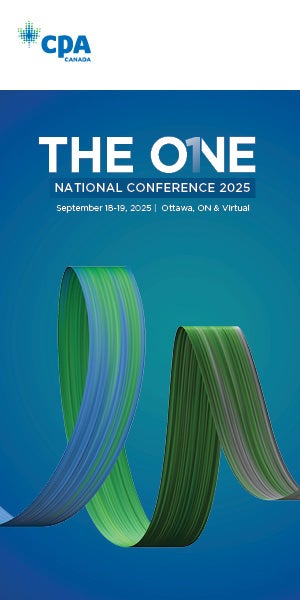
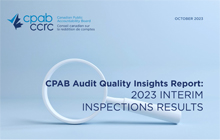
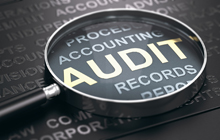
(0) Comments